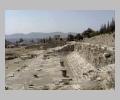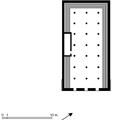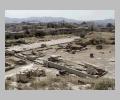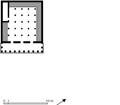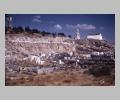| Context: | Eleusis |
| Type: | Hall |
| Summary: | Large, nearly square hall with many columns; in the Sanctuary of Demeter and Kore, at the end of the paved Sacred Way. |
| Date: | ca. 435 BC - 421 BC |
| Dimensions: | ca. 52 m x 54 m. |
| Region: | Attica |
| Period: | Classical |
Plan:
Eight tiers of seats on 4 sides divided by openings for 2 entrances on each of 3 sides. A total of 42 superimposed columns arranged in a 6 x 7 pattern supported the opaioned roof. Directly below the opaion was a rectangular chamber.
History:
Serving as the initiation Hall and Temple for the Eleusinian Mysteries, the Telesterion was located on the same spot through many building enlargements. The interior chamber housed the hiera (sacred objects) and was known as the Anaktoron (Palace). In all renovations after the Archaic period this area remained unaltered. The earliest building traces on the site are of a Mycenaean megaron opening east. This was replaced by a Geometric building, and by Solon's time (ca. 600 B.C.) a rectangular hall, probably columned, running southwest-northeast had been built to accommodate a larger number of participants. The Anaktoron may have been separated from the rest of the building. There were other additions under Peisistratos, ca. 550-510 B.C., and Kimon, ca. 479-461 B.C. The Classical building (ca. 435 B.C.) by the architect Koroibos, was designed to hold large groups, up to 3000, to witness the ceremonial proceedings. In the 4th century B.C. a colonnaded porch was added to the southeastern side of the building and was known as the Stoa of Philon.
Other Bibliography:
